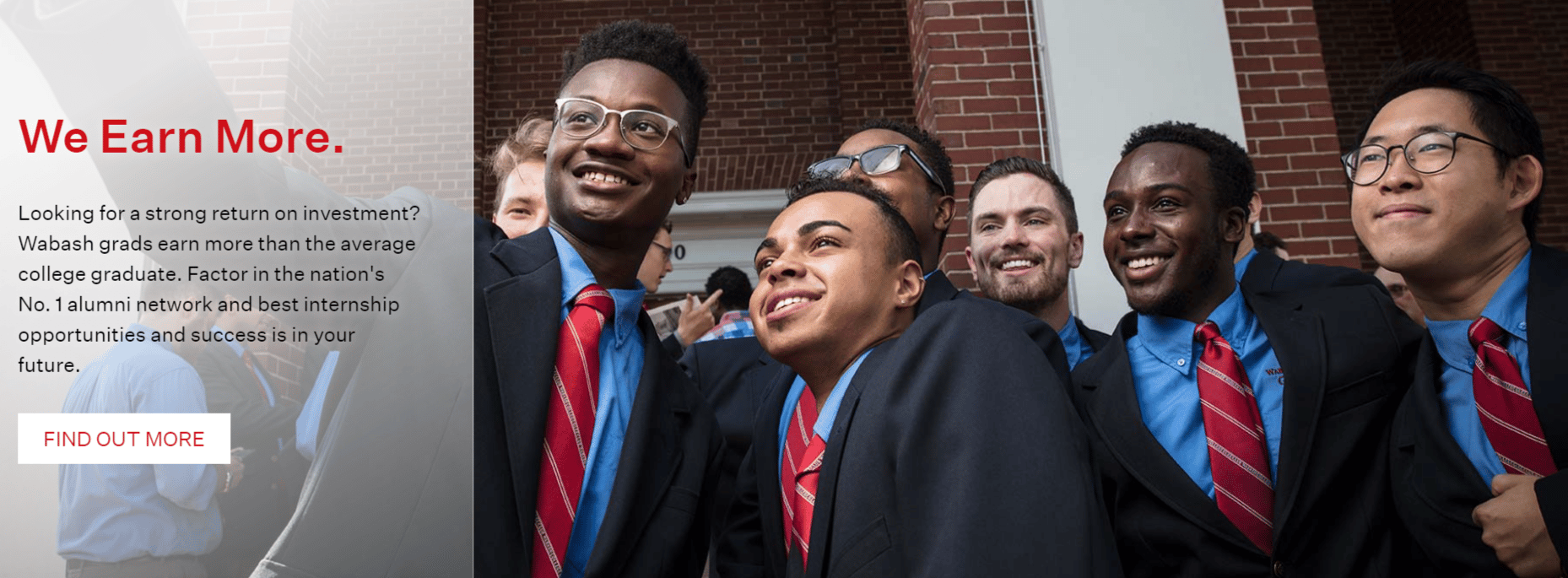Scaling AI Fluency for Marketing Teams: How ASU Leads with Innovation and Intent
See how ASU is leading AI fluency for marketing teams through leadership buy-in, innovation challenges, and custom tools that drive real, campus-wide impact.
Marketing Strategies
Marketing a small liberal arts college has its challenges, but with marketing outcomes, you can stand above the rest.
One of the hardest things to do in education marketing is differentiate yourself from all the other liberal arts colleges out there.
If you’re in the private, liberal arts space, almost all of your competitors will have the same core majors and departments.
Many of them will also have beautiful campuses and facilities.
Almost all of them will have an attractive teacher to student ratio.
Another major challenge is that a small liberal arts college education often comes with an expensive price tag.
So how can you show prospective students what really makes you special and help students with the costs?
In this episode of The Higher Ed Marketer podcast, Dr. Scott Feller, President at Wabash College, shares how to provide an elite education without an elite price tag through outcomes marketing.
Dr. Feller explains the benefits of leading with student outcomes, embracing comparison, and building a philanthropic alumni network.
Here are some of the highlights of our conversation.
Wabash College is an unapologetically residential liberal arts college for men in Indiana.
That’s right. There are only a handful of liberal arts schools like it in the country.
We have a unique mission. We know it. And every student, faculty and staff member knows our mission. We’re very committed to it.
We know it’s not for everyone. But we think that for many young men, it’s an excellent option.
We’re also very committed to traditional liberal arts.
The education here is timeless in our liberal arts curriculum that emphasizes clear written and oral communication, critical thinking, moral reasoning, and the ability to work with others.
But it’s also timely in that we’re very much focused on sending young men from Wabash College out into the world.
Of course, this is a major differentiator for them, but it can also make it a hard sell to a public that’s not familiar with single sex college campuses.
Dr. Feller uses what we’re calling outcomes marketing to help prospective students understand the unique benefits of the Wabash College experience.
The way they compare themselves to others can be bold, to say the least.
For many education marketers, the qualities that make their school unique and attractive are really the same things that make all the others attractive to prospective students.
How can you set yourself apart when what makes you great is also what makes other schools like you great?
We’ve probably been about three or four years in a model where we really lead with outcomes.
Traditionally, small liberal arts colleges tend to lead with what we are, not what we get done.
Everyone says they’re a unique, small community. And they’re right!
But at the end of the day, students and their families want to know what is going to be my experience [during] and after Wabash College.
Outcomes marketing is all about bold claims that can be backed up with real data.
It’s about starting with the end in mind for prospective students and their families.
That’s why we talk a lot about graduation rates. Young men are not graduating from college at great rates. So we’re very proud [of our graduation rates]. We think our focus on young men and their success gives us an advantage there.
We also know families are concerned about the return on their investment. Wabash is quite an affordable option for families, but we’re still asking people to invest their time and their money.
So lead with the fact that 98 to 100% of our graduates are settled in their first destination a couple of months past graduation.
For me, this is huge.
Private higher education is expensive, and every year the cost just keeps going up.
While they consider your school, families are struggling to justify the major costs they’ll incur or the major debt their families will take on.
It doesn’t help to ignore the pricing question in your marketing.
Playing down the economic sacrifice required for a higher education, trying to make it sound as if it’s no big deal, is not helpful either.

We lead with our position in national rankings. We end up at the top of some very good lists.
One that we’re particularly proud of is that we have the number one alumni network in the country. It is part of the secret of how we get these guys placed in internships and jobs.
We also have some enviable numbers from, for example, Payscale regarding the 10-years-out salary and career data [of our graduates].
What Wabash is doing here is brilliant.
Using the data they have available, they’re positioning themselves as an investment that has a significant return on investment.
With outcomes marketing messaging, you can do the same.
Like all of our blog post reviews of The Higher Ed Marketer podcasts, there’s so much more to learn in the podcasts themselves.
Later in our interview, Dr. Scott Feller explains more how they use social media tools to create community among students at the top of the funnel.
Listen to our interview with Scott to get even more insights into:
Then you’ve got to know how to write for the web. That’s why we want to send you our popular ebook: Writing for the Web: 7 Secrets to Content Marketing Success for Education Marketers!
With this helpful resource, you’ll learn how to:
In short, you’ll be able to write the copy that makes your digital marketing strategy work for you. Download your copy today!
Featured image via wabash.edu
Subscribe to The Higher Ed Marketer podcast today!